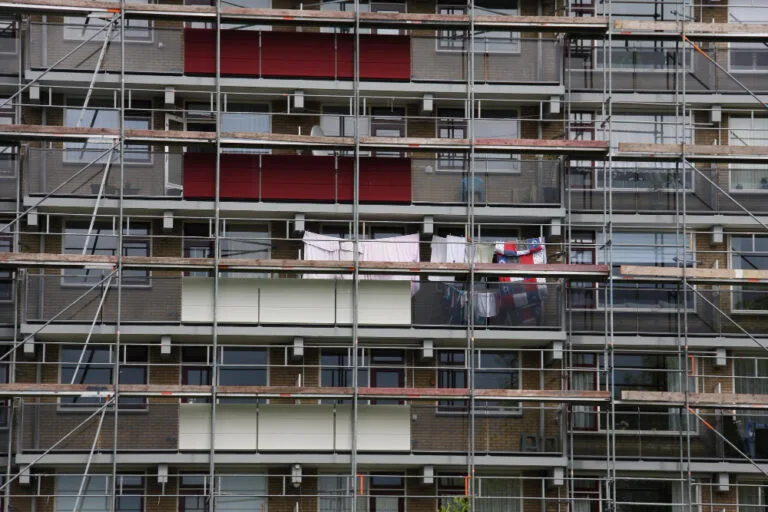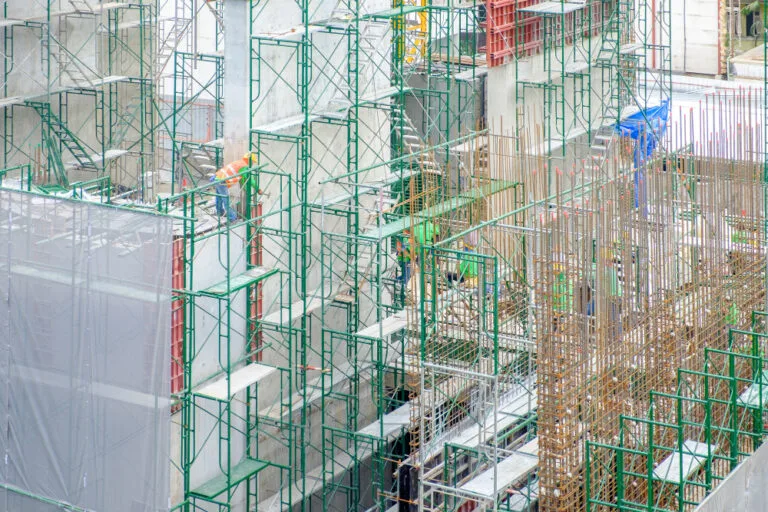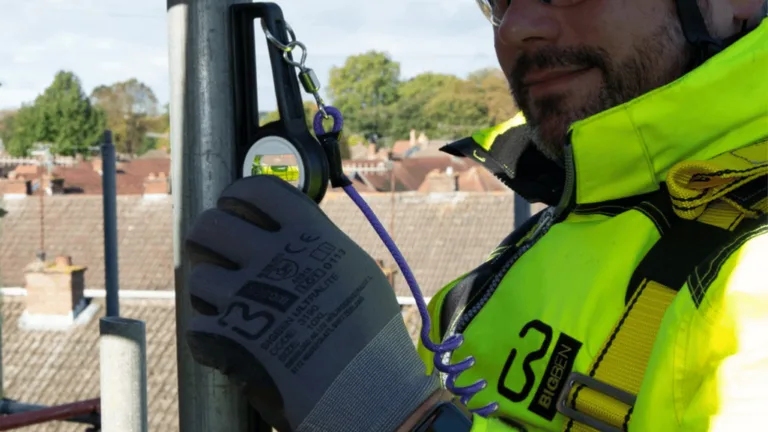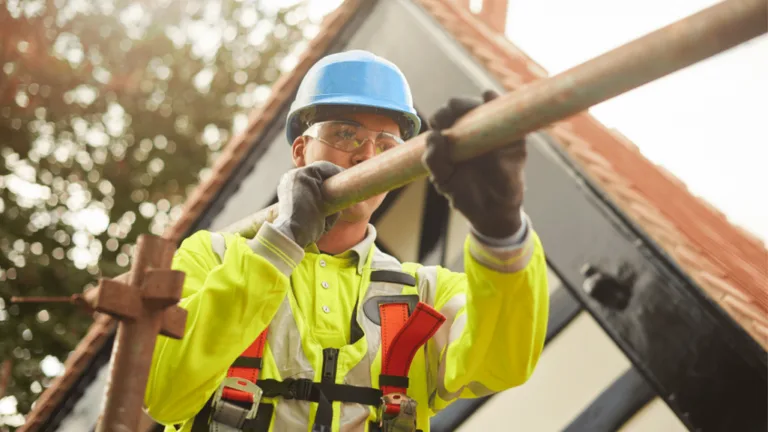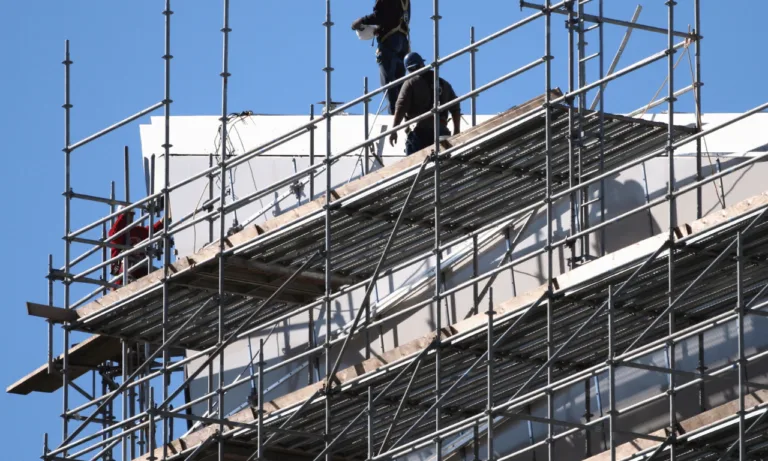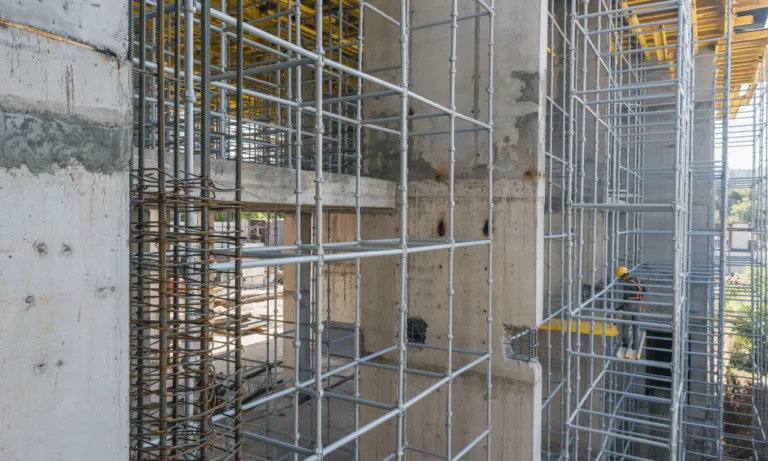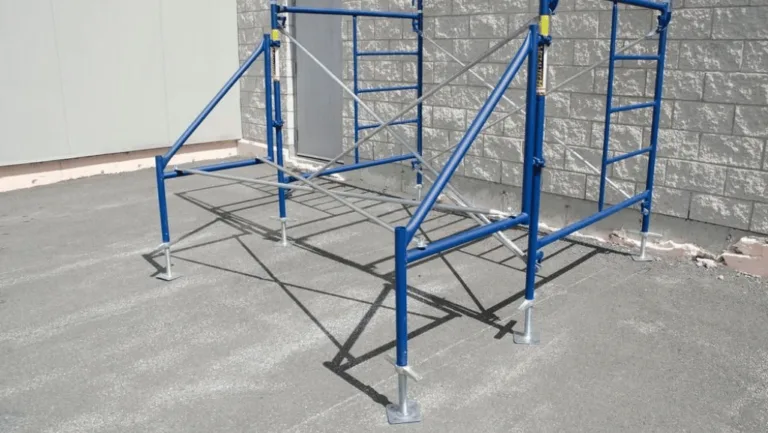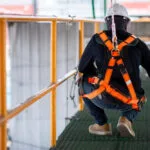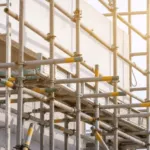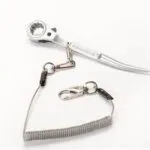Phone:
(+65)8319-0742
Welcome to our comprehensive guide on conducting scaffold inspections. Ensuring worker safety and compliance with OSHA regulations is of utmost importance in the construction industry. By following our scaffold inspection checklist and guidelines, you’ll be equipped to identify potential hazards, address safety concerns, and implement best practices for scaffold inspections.
Key Takeaways:
- A thorough scaffold inspection is crucial for worker safety and compliance with OSHA regulations.
- Following a scaffold inspection checklist helps identify potential hazards and address safety concerns.
- Adhering to scaffold inspection guidelines ensures the implementation of best practices.
- Scaffold inspections should be conducted regularly to maintain a safe working environment.
- Documentation and follow-up actions are essential for compliance and record-keeping purposes.
Understanding Scaffold Safety
Before diving into the inspection checklist, it’s essential to understand the importance of scaffold safety. By adopting best practices in scaffold safety, you can create a secure working environment for your team. This section will cover the basics of scaffold safety, including the key elements of a scaffold safety checklist and a discussion on the importance of using a proper scaffold inspection form.
When it comes to working at heights, ensuring scaffold safety is crucial. By implementing a scaffold safety checklist, you can systematically assess and address potential risks, preventing accidents and injuries. This checklist serves as a guide, covering various aspects of scaffold safety that need to be considered during inspection. It acts as a reminder to thoroughly examine each component and ensure compliance with safety regulations.
In addition to a scaffold safety checklist, using a proper scaffold inspection form is equally important. This form allows inspectors to document their findings and track any observed hazards or deficiencies. It serves as an invaluable tool for maintaining records, tracking corrective actions, and ensuring ongoing safety compliance.
By adhering to best practices and following a scaffold safety checklist and inspection form, you can significantly reduce the risk of accidents and create a safe working environment. It’s essential to train your team on these best practices and regularly review and update the checklist and inspection form to reflect industry standards and regulatory changes.
OSHA Scaffold Inspection Requirements
OSHA (Occupational Safety and Health Administration) has established specific requirements for scaffold inspections to ensure compliance and worker safety. Adhering to these regulations is essential to avoid penalties and create a safe working environment on construction sites.
Frequent Inspections
One of the key OSHA scaffold inspection requirements is the frequency of inspections. According to OSHA guidelines, scaffold inspections should be conducted regularly, typically before each work shift, after any alterations or modifications, and after severe storms or adverse weather conditions that may affect scaffolding stability.
By conducting frequent inspections, potential hazards can be identified and addressed promptly, reducing the risk of accidents and injuries.
Qualified Inspectors
Another important aspect of OSHA scaffold inspections is the qualification of the inspectors. OSHA requires that scaffold inspections be performed by a competent person designated by the employer.
A competent person is someone who has sufficient knowledge, training, and experience to identify hazards and has the authority to take corrective measures to ensure worker safety. This person should be familiar with scaffold construction, component specifications, and OSHA regulations.
Documentation Procedures
OSHA also requires proper documentation of scaffold inspections. Inspections should be recorded using a scaffold inspection form that includes details such as the date of inspection, the name of the inspector, the condition of the scaffold, and any identified hazards or deficiencies.
These records should be kept on file and easily accessible for future reference. They play a crucial role in demonstrating compliance with OSHA regulations and can be valuable in case of inspections or investigations.
Keeping accurate and up-to-date documentation helps ensure accountability, track improvements, and identify any recurring issues that need to be addressed.
By following the OSHA scaffold inspection requirements, construction companies can prioritize worker safety, reduce the risk of accidents, and avoid costly penalties. Adhering to these guidelines not only demonstrates a commitment to safety but also creates a culture of vigilance and responsibility in the industry.
Pre-Inspection Preparation
Before beginning the scaffold inspection process, it’s essential to adequately prepare to ensure a smooth and efficient examination. This section will guide you through the necessary steps involved in pre-inspection preparation, including reviewing the scaffold safety checklist and ensuring you have all the required equipment and resources.
Gather the Scaffold Safety Checklist
To kickstart your pre-inspection preparation, retrieve the scaffold safety checklist. This checklist serves as a valuable resource, outlining the key elements that need to be assessed during the inspection. It serves as a comprehensive guide to help you identify potential safety hazards and ensure compliance with safety standards.
Review the Checklist Thoroughly
Take the time to carefully review the scaffold safety checklist before the inspection. Familiarize yourself with each item on the list, ensuring you understand the criteria and requirements for each component. This step will enable you to perform a meticulous examination, leaving no room for oversight or negligence.
Ensure Availability of Equipment and Resources
Another crucial aspect of pre-inspection preparation is ensuring that all the necessary equipment and resources are readily available. This includes items such as measuring tapes, inspection tags, and any specialized equipment needed for a particular type of scaffold. Having everything prepared in advance will save time and streamline the inspection process.
Clarify Roles and Responsibilities
In a construction environment, clear communication and defined roles are paramount to maintaining efficiency and safety. Before conducting the inspection, clearly define each team member’s responsibilities and assign specific tasks to ensure a coordinated effort and avoid duplication of efforts. This will ensure that everyone understands their role and knows what is expected of them during the inspection.
Establish Safety Procedures
Prioritizing safety during the inspection process is crucial. Establish clear safety procedures that all team members must adhere to, such as the use of personal protective equipment (PPE) and proper safety protocols. By creating a safe working environment, you can prevent accidents and promote the well-being of everyone involved.
By thoroughly preparing for the scaffold inspection, including reviewing the scaffold safety checklist and ensuring the availability of necessary equipment and resources, you can streamline the process and identify any potential issues efficiently. This pre-inspection preparation sets the stage for a successful and comprehensive examination, ultimately resulting in enhanced scaffold safety and compliance.
Conducting the Scaffold Inspection

When it comes to scaffold inspections, a meticulous approach is essential for identifying potential hazards and ensuring worker safety. In this section, we will guide you through the step-by-step process of conducting a thorough scaffold inspection, covering all the crucial aspects that need to be examined.
1. Inspecting the Scaffold Structure
Begin by visually inspecting the scaffold structure to ensure its stability and integrity. Look for any signs of damage or deterioration, such as cracks, rust, or missing parts. Pay close attention to the foundation and base plates, as well as the vertical and horizontal members. Any structural weaknesses or instability must be promptly addressed.
2. Checking the Scaffold Components
Next, evaluate the various components of the scaffold system. This includes inspecting the guardrails, toe boards, and midrails to ensure they meet the required height and are securely fastened. Check the platform for stability and proper installation, ensuring it is free from debris or any obstructions that could pose a tripping hazard.
Additionally, examine the scaffold’s access points, such as ladders or stairs, to verify their stability and condition. Make sure they are properly secured and provide safe entry and exit routes for workers.
3. Identifying Potential Hazards
During the inspection, be vigilant in identifying potential hazards that could compromise worker safety. Look for electrical hazards, such as overhead power lines near the scaffold, and ensure proper precautions are in place to prevent accidental contact.
Pay attention to the surrounding environment as well. Assess the scaffold’s proximity to other equipment, machinery, or moving objects that could pose a risk. Adequate measures should be taken to ensure a safe distance and minimize the likelihood of accidents.
4. Utilizing Scaffold Inspection Guidelines
It is highly recommended to follow scaffold inspection guidelines provided by regulatory bodies, such as OSHA. These guidelines outline specific requirements and best practices for scaffold inspections, ensuring a standardized and comprehensive approach. Adhering to these guidelines will help you cover all the necessary areas and ensure compliance with safety regulations.
5. Using a Scaffold Checklist Template
To facilitate and streamline the inspection process, consider utilizing a scaffold checklist template. These templates provide a structured framework for conducting inspections, helping you ensure that no crucial steps or components are overlooked. They can serve as a comprehensive guide, assisting you in evaluating the scaffold system thoroughly.
By following the scaffold inspection guidelines and using a scaffold checklist template, you can conduct a systematic and thorough examination of the scaffold, identifying any potential hazards and addressing them promptly. This diligent approach will help maintain a safe working environment and ensure compliance with safety regulations.
Addressing Safety Concerns

During a scaffold inspection, it’s crucial to promptly identify and address any safety concerns or hazards that may arise. By implementing best practices for scaffold inspection and taking immediate corrective actions, you can effectively mitigate risks and maintain a safe working environment.
Common Safety Concerns
Inspectors should pay close attention to the following common safety concerns during a scaffold inspection:
- Loose or missing guardrails
- Inadequate access points
- Insecure scaffold planking
- Unstable footing or base
- Insufficient fall protection
- Inadequate scaffold bracing
These concerns pose significant risks to workers and can potentially lead to accidents or injuries. Addressing these issues promptly is essential to ensure a safe working environment.
Implementing Best Practices
In order to effectively address safety concerns during scaffold inspections, consider the following best practices:
- Thorough Examination: Conduct a meticulous examination of the scaffold structure, components, and safety features.
- Review Documentation: Check if the scaffold is built and installed according to the manufacturer’s instructions and industry regulations.
- Inspect Personal Protective Equipment (PPE): Verify that all workers have appropriate PPE, such as hard hats, safety harnesses, and non-slip footwear.
- Communicate with Workers: Speak to workers on-site to gather additional insights or identify any concerns they may have.
- Continuous Training: Provide ongoing training for workers to ensure they understand the importance of scaffold safety and can identify potential hazards.
By implementing these best practices, inspectors can proactively address safety concerns and prevent accidents, creating a safer work environment for all personnel.
| Safety Concern | Action Steps |
|---|---|
| Loose or missing guardrails | Secure or replace guardrails promptly |
| Inadequate access points | Create safe and accessible entry and exit points |
| Insecure scaffold planking | Replace damaged or insecure planks |
| Unstable footing or base | Stabilize the scaffold’s foundation |
| Insufficient fall protection | Install or reinforce fall protection measures |
| Inadequate scaffold bracing | Ensure proper bracing and reinforcement |
By addressing safety concerns promptly and thoroughly, inspectors can uphold the highest standards of safety and protect the well-being of everyone on the worksite.
Documentation and Follow-Up
Proper documentation is a critical aspect of scaffold inspections as it ensures compliance with OSHA regulations and facilitates proper record-keeping. By following the documentation requirements and implementing robust follow-up procedures, you can effectively monitor safety and maintenance in scaffold systems.
Completing the Scaffold Inspection Form
One of the key aspects of proper documentation is completing the scaffold inspection form. This form serves as a comprehensive record of the inspection process and should include details such as the date of the inspection, the inspector’s name, and observations regarding any identified hazards or concerns. By accurately completing this form, you create a valuable resource for ongoing safety assessments and future reference.
When filling out the scaffold inspection form, ensure that all relevant fields are completed accurately and in detail. Provide concise yet comprehensive descriptions of any observed issues, including their locations and severity. Thoroughly documenting both satisfactory and unsatisfactory conditions helps establish a baseline for future inspections and contributes to a proactive safety culture.
Keeping Records of Inspections
It is crucial to maintain records of all scaffold inspections conducted on your worksite. These records serve as evidence of compliance and can be invaluable in the event of audits or legal inquiries. As per OSHA guidelines, retain these records for a minimum of three years. Ensure easy accessibility to the inspection records, allowing authorized personnel to review them promptly when required.
Consider establishing a well-organized system for storing and categorizing inspection records. This may involve assigning unique identifiers to each inspection and maintaining a digital or physical filing system. By maintaining proper records, you demonstrate your commitment to safety and provide a solid foundation for future improvement efforts.
Importance of Follow-Up Actions
Completing the scaffold inspection is just the first step. Effective follow-up actions are crucial to address any identified hazards or concerns and ensure ongoing safety. Promptly communicate and escalate the findings to the appropriate individuals, including supervisors, managers, or safety personnel, and take immediate corrective actions to mitigate any risks.
For each identified deficiency, establish a clear plan for remedial action and assign responsibility to the relevant team members. Regularly monitor progress and ensure that the necessary changes or repairs are carried out promptly and efficiently. By prioritizing follow-up actions, you demonstrate your commitment to continuous improvement and the well-being of your workforce.
Regular Re-Inspections
Performing regular re-inspections is a vital part of maintaining scaffold safety. Ongoing assessments allow you to monitor the effectiveness of previous corrective actions, identify new hazards, and ensure compliance with safety standards. Schedule re-inspections at appropriate intervals, considering factors such as the level of usage, environmental conditions, and any changes in the worksite. Regular re-inspections help to detect potential issues early on, preventing them from escalating into serious safety hazards.
Ensure that the re-inspection process follows the same guidelines as the initial inspection and utilizes the same scaffold inspection form or an updated version, if necessary. By conducting regular re-inspections, you demonstrate your commitment to maintaining a safe working environment and protecting the well-being of your employees.
By diligently documenting scaffold inspections, conducting effective follow-up actions, and performing regular re-inspections, you can ensure ongoing compliance with OSHA scaffold inspection standards. Implementing proper documentation and follow-up procedures helps create a culture of safety and enables the early detection and resolution of potential hazards, thus safeguarding the well-being of your workforce.
| Documentation and Follow-Up Guidelines |
|---|
| Complete the scaffold inspection form accurately and in detail, including observations and identified hazards. |
| Maintain records of all scaffold inspections for a minimum of three years. |
| Establish a well-organized system for storing and categorizing inspection records. |
| Communicate findings and take prompt corrective actions to address identified hazards or concerns. |
| Perform regular re-inspections to monitor ongoing safety and compliance. |
Conclusion
Ensuring safety on construction sites should always be a top priority. By following a scaffold inspection checklist, you can effectively identify potential hazards and address safety concerns. Regular inspections, as outlined in the provided scaffold inspection guidelines, are crucial for maintaining a secure working environment.
Adhering to OSHA regulations is not only a legal requirement but also a moral obligation to protect the well-being of your team. By conducting thorough scaffold inspections and promptly addressing any safety concerns that arise, you can prevent accidents and injuries.
Remember to consult the scaffold checklist template for a comprehensive and efficient inspection process. By documenting your inspections and implementing regular follow-up actions, you can ensure ongoing safety on the construction site.
FAQ
What is the purpose of a scaffold inspection checklist?
A scaffold inspection checklist serves as a systematic guide to ensure the safety and compliance of scaffolding structures. By using a checklist, you can identify potential hazards, address safety concerns, and implement measures to prevent accidents on the worksite.
How often should scaffold inspections be conducted?
According to OSHA regulations, scaffold inspections should be conducted before each work shift, after any significant alterations or occurrences that may affect the integrity of the scaffold, and after any event that could potentially cause damage to the scaffold. Regular inspections are vital for maintaining a safe working environment.
Who should conduct scaffold inspections?
Scaffold inspections should be conducted by a competent person who has received proper training and possesses the necessary knowledge and experience to identify hazards and evaluate the integrity of the scaffold. You should ensure that the inspector is qualified and has a good understanding of scaffold safety guidelines.
What should be included in a scaffold inspection form?
A scaffold inspection form should include information such as the location and identification of the scaffold, date and time of the inspection, details of the inspector, observations of any hazards or deficiencies, corrective actions taken, and the signature of the inspector. It is crucial to complete the form accurately and thoroughly for documentation and record-keeping purposes.
What are some common safety concerns to address during a scaffold inspection?
Common safety concerns during a scaffold inspection may include inadequate planking or guardrails, unstable foundations, inadequate access points, improper bracing or anchoring, lack of fall protection measures, and potential dangers from nearby equipment or electrical hazards. These concerns should be addressed promptly to ensure worker safety.
What should be done with the documentation after a scaffold inspection?
Documentation of scaffold inspections should be retained for a specified period as required by OSHA regulations. These records should be accessible for future reference, inspections, and audits. It is important to keep the documentation organized and easily retrievable for compliance purposes.



